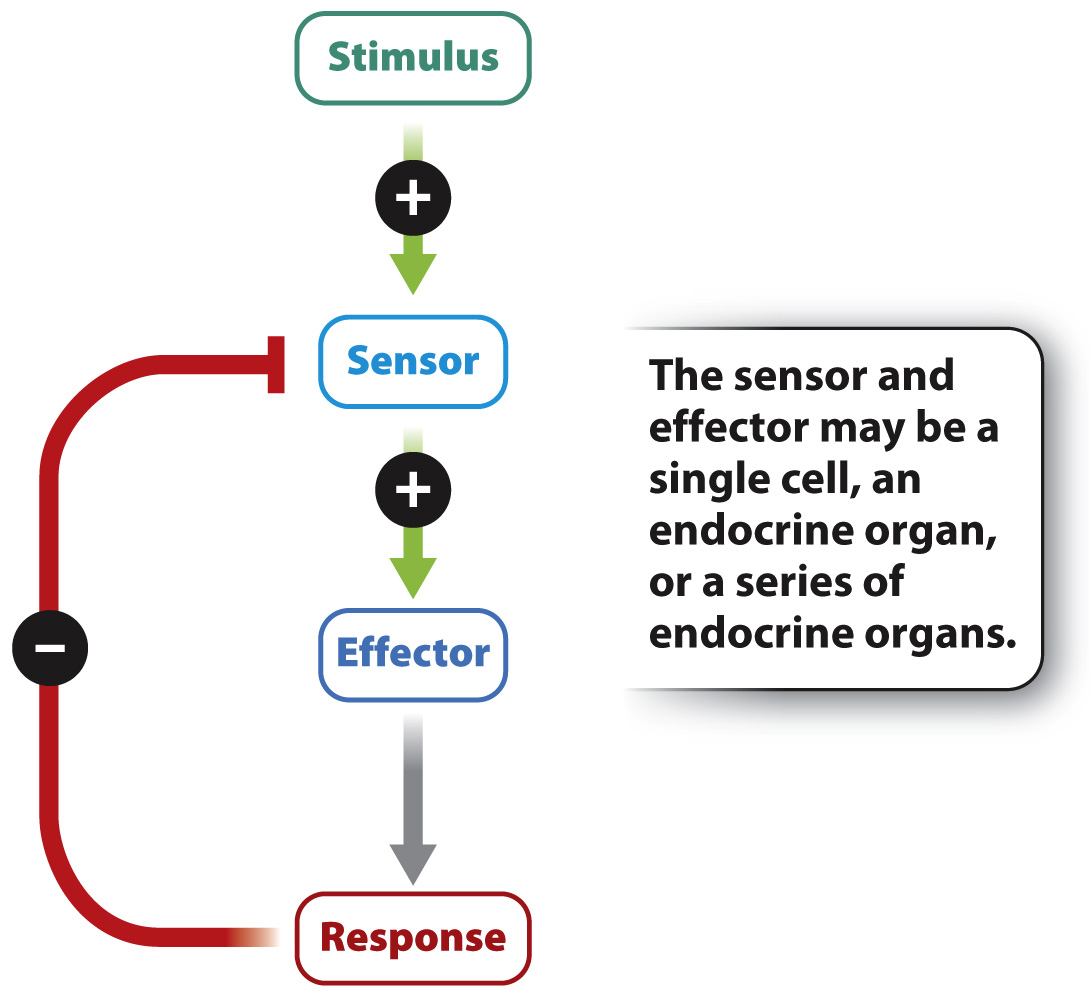The endocrine system underlies homeostasis.
Endocrine control of internal body functions is also central to homeostasis, the maintenance of a steady physiological state within a cell or an organism (Chapters 5 and 35). Without some way to maintain a stable internal environment, changing environmental conditions would lead to dangerous shifts in an animal’s physiological function. For example, an animal’s body weight depends on the regulation of its energy intake relative to energy expenditure. Disruption of hormones that regulate appetite and food intake can lead to obesity on the one hand or to weakness and lethargy on the other. Similarly, hormones that regulate the concentration of key ions in the body, such as Na+ and K+, are fundamental to healthy nerve and muscle function (Chapters 35 and 36) and fluid balance within the body (Chapter 41).
How does the body, and in particular the endocrine system, maintain homeostasis? Maintaining homeostasis depends on feedback from the target organ to the endocrine gland that secretes the hormone. Because hormones are transmitted through the bloodstream, this feedback can occur over varying distances within the body, coordinating the functions of several organs at any one time. In response to this feedback, the endocrine gland modifies its own subsequent production of hormone, either increasing or decreasing it. There are two general types of feedback, negative feedback and positive feedback.

Homeostasis typically depends on negative feedback. In Chapter 35, we saw how both the temperature in a house and the core body temperature of an animal are maintained at a constant level by this type of control.
Many physiological parameters—
Let’s examine an example in more detail. Like core body temperature, the amount of glucose in the blood of animals is maintained at a steady level (Fig. 38.5). If glucose levels are too low, cells of the body do not have a ready source of energy. If glucose levels are too high for too long, they can damage organs.

Maintaining steady blood-
What happens if blood-
When the control of blood-
Quick Check 1 Diabetes mellitus is a disease characterized by high blood-
Quick Check 1 Answer
Diabetes can result either from decreased insulin production by the pancreas (type 1 diabetes) or decreased effect of insulin on target cells (type 2 diabetes). Type 1 diabetes is an autoimmune disease in which the insulin-

In some instances, it is necessary to accelerate the response of target cells for a period of time. Positive feedback provides this enhancement (Fig. 38.6). In positive feedback, a stimulus causes a response in the same direction as the initial stimulus, which leads to a further response, and so on. In positive feedback in the endocrine system, a stimulus leads to secretion of a hormone that causes a response, and the response causes the release of more hormone. The result is an escalation of the response. A positive feedback loop reinforces itself until it is interrupted or broken by some sort of external signal outside the feedback loop but from within the body.
Positive feedback occurs in mammals during birth (Chapter 42). In response to uterine contractions, the hormone oxytocin is released from the pituitary gland. The release of oxytocin (stimulus) by the pituitary gland causes the uterine muscles (effector) to contract more forcefully. The uterine contractions in turn stimulate (positive feedback) the pituitary gland to secrete more oxytocin, causing the uterine muscles to contract more forcefully and more frequently.